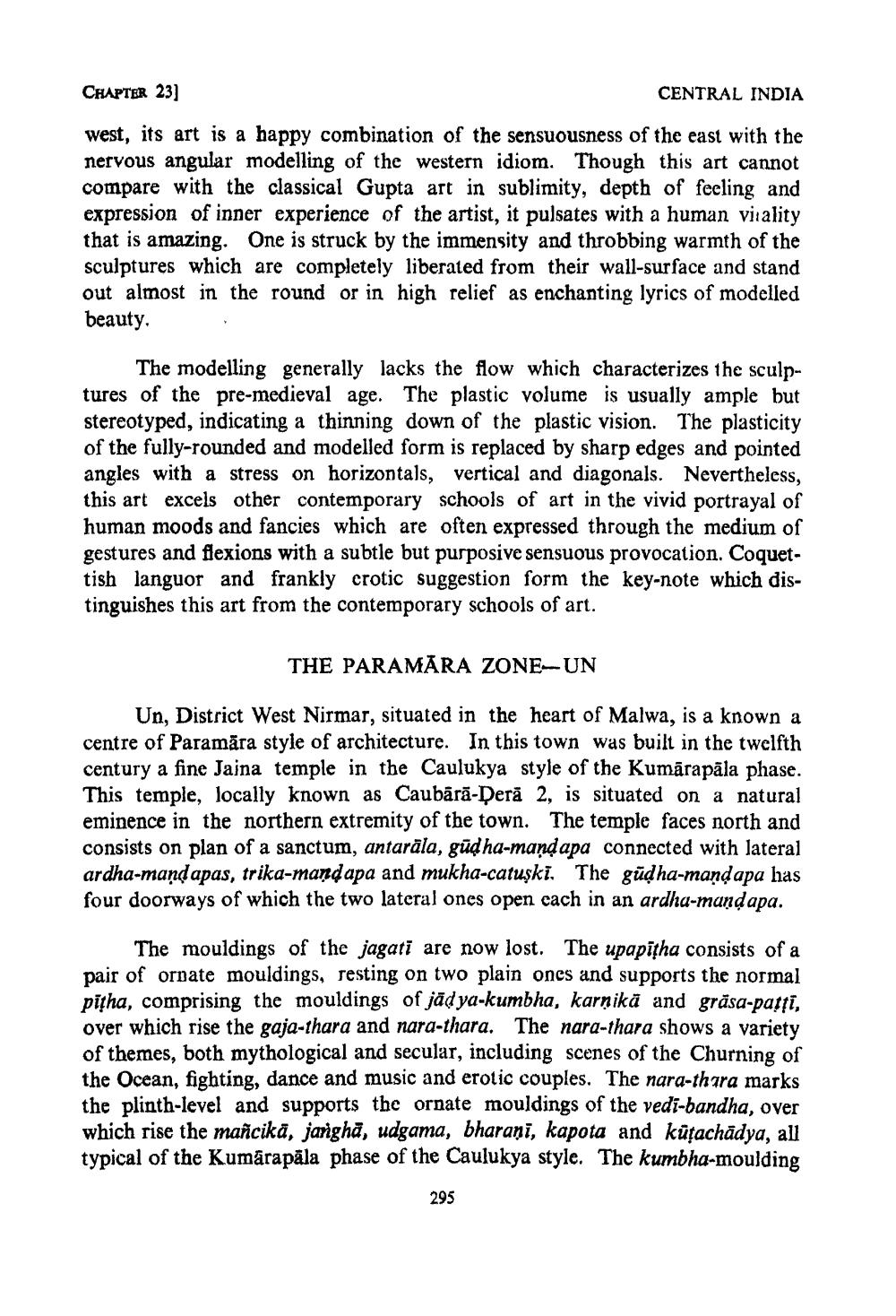________________
CHAPTER 23]
CENTRAL INDIA
west, its art is a happy combination of the sensuousness of the east with the nervous angular modelling of the western idiom. Though this art cannot compare with the classical Gupta art in sublimity, depth of feeling and expression of inner experience of the artist, it pulsates with a human vitality that is amazing. One is struck by the immensity and throbbing warmth of the sculptures which are completely liberated from their wall-surface and stand out almost in the round or in high relief as enchanting lyrics of modelled beauty.
The modelling generally lacks the flow which characterizes the sculptures of the pre-medieval age. The plastic volume is usually ample but stereotyped, indicating a thinning down of the plastic vision. The plasticity of the fully-rounded and modelled form is replaced by sharp edges and pointed angles with a stress on horizontals, vertical and diagonals. Nevertheless, this art excels other contemporary schools of art in the vivid portrayal of human moods and fancies which are often expressed through the medium of gestures and flexions with a subtle but purposive sensuous provocation. Coquettish languor and frankly crotic suggestion form the key-note which distinguishes this art from the contemporary schools of art.
THE PARAMARA ZONE-UN
Un, District West Nirmar, situated in the heart of Malwa, is a known a centre of Paramara style of architecture. In this town was built in the twelfth century a fine Jaina temple in the Caulukya style of the Kumārapāla phase. This temple, locally known as Caubara-Deră 2, is situated on a natural eminence in the northern extremity of the town. The temple faces north and consists on plan of a sanctum, antarāla, gūḍha-mandapa connected with lateral ardha-mandapas, trika-mandapa and mukha-catuşki. The gudha-maṇḍapa has four doorways of which the two lateral ones open cach in an ardha-mandapa.
The mouldings of the jagati are now lost. The upapīṭha consists of a pair of ornate mouldings, resting on two plain ones and supports the normal pitha, comprising the mouldings of jāḍya-kumbha, karṇikā and gräsa-paṭṭī, over which rise the gaja-thara and nara-thara. The nara-thara shows a variety of themes, both mythological and secular, including scenes of the Churning of the Ocean, fighting, dance and music and erotic couples. The nara-thara marks the plinth-level and supports the ornate mouldings of the vedi-bandha, over which rise the mañcikā, janghā, udgama, bharaṇī, kapota and küṭachādya, all typical of the Kumārapāla phase of the Caulukya style. The kumbha-moulding
295




